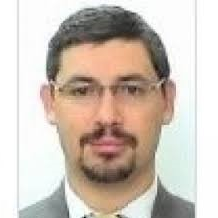Monitoring and Governance of Water and Sanitation Services and Water Resources for Sustainable Development
A special issue of Water (ISSN 2073-4441). This special issue belongs to the section "Water Resources Management, Policy and Governance".
Deadline for manuscript submissions: closed (30 September 2018) | Viewed by 105044
Special Issue Editors
Interests: sustainable development; water resources management; multivariate statistics; muticriteria decision-making; non-linear mathematical programming; uncertainty; social choice
Interests: water governance; sustainable WASH services; monitoring and evaluation; human rights to water and sanitation
Special Issues, Collections and Topics in MDPI journals
Interests: water governance, human rights, sustainable water and sanitation services, resilience
Special Issues, Collections and Topics in MDPI journals
Interests: water resources management; water governance; integrated natural resources management (INRM); ecosystem-based management; monitoring and evaluation
Interests: network utilities; regulation; benchmarking utilities; private sector participation in infrastructure; infrastructures and growth
Special Issue Information
Dear Colleagues,
This Special Issue on “Monitoring and Governance of Water and Sanitation Services and Water Resources for Sustainable Development” invites papers that report on recent developments in monitoring and modelling of water services and resources, sanitation services—including collection and treatment of wastewater and faecal sludge—and hygiene, and associated institutional arrangements, within the framework of the 2030 Agenda for Sustainable Development and particularly related to the Sustainable Development Goal (SDG) 6 aiming to “ensure availability and sustainable management of water and sanitation for all” (SDG6) with linkages to several other SDGs, such as SDGs 11, 13, 14 and 15.
Safe drinking water and adequate sanitation and hygiene are pillars of human health and well-being. Water is also needed for food production, energy generation and industrial processes and goods, uses that are highly inter-connected and potentially conflicting. Non-safely managed wastewater put at risk healthy ecosystems, crucial to ensure quantity and quality of freshwater, and to maintain resilience to climate change. Integrated water resources management is essential to harness synergies as well as to manage potential trade-offs, to ensure availability and sustainable management of water and sanitation for all. The 8 targets and 11 indicators defining SDG6 cover all these dimensions, and the so called means of implementation (expand international cooperation and capacity-building, and support and strengthen the participation of local communities).
This Special Issue will include innovative case studies focusing on different regions and geographical scales, as well as the participation of different actors (public, utilities, providers, non-governmental). We look for innovations in the measurement of the SDG6 goal and targets at national and international levels, as well as local illustrative experiences that could be scaled-up or even influence future refinements of “Monitoring Water and Sanitation for Sustainable Development” from a Sustainable Development Goals perspective.
We welcome theoretical and applied analyses about monitoring of SDG6, procedures and indicators, as well as field studies and lessons learnt from actual monitoring experiences. We invite you to submit papers that involve innovative methods to deal with the analysis of multiple geographical scales, missing data, disaggregated comparative analyses, relationships and models linking SDG6 indicators and technological, economic and socio- environmental variables. We are particularly open to contributions that demonstrate novel developments and applications in any step of the data management cycle (data collection, pre-process, modelling and inference, post-process/visualization, analysis, decision-making), specifically at national and local scales.
Prof. Eng. Agustí Pérez-Foguet
PhD. Eng. Ricard Giné Garriga
PhD. Eng. Alejandro Jiménez Fernández de Palencia
Prof. Anna Tengberg
PhD. Daniel Camós
PhD. Luis Alberto Andrés
Guest Editors
Manuscript Submission Information
Manuscripts should be submitted online at www.mdpi.com by registering and logging in to this website. Once you are registered, click here to go to the submission form. Manuscripts can be submitted until the deadline. All submissions that pass pre-check are peer-reviewed. Accepted papers will be published continuously in the journal (as soon as accepted) and will be listed together on the special issue website. Research articles, review articles as well as short communications are invited. For planned papers, a title and short abstract (about 100 words) can be sent to the Editorial Office for announcement on this website.
Submitted manuscripts should not have been published previously, nor be under consideration for publication elsewhere (except conference proceedings papers). All manuscripts are thoroughly refereed through a single-blind peer-review process. A guide for authors and other relevant information for submission of manuscripts is available on the Instructions for Authors page. Water is an international peer-reviewed open access semimonthly journal published by MDPI.
Please visit the Instructions for Authors page before submitting a manuscript. The Article Processing Charge (APC) for publication in this open access journal is 2600 CHF (Swiss Francs). Submitted papers should be well formatted and use good English. Authors may use MDPI's English editing service prior to publication or during author revisions.
Keywords
- Sustainable Development Goals
- Sustainable Development Indicators
- Water, Sanitation and Hygiene
- Water 4.0
- Data collection, management and analysis
- Statistical modelling
- Econometric modelling
- Support information systems
- Performance and benchmarking
Benefits of Publishing in a Special Issue
- Ease of navigation: Grouping papers by topic helps scholars navigate broad scope journals more efficiently.
- Greater discoverability: Special Issues support the reach and impact of scientific research. Articles in Special Issues are more discoverable and cited more frequently.
- Expansion of research network: Special Issues facilitate connections among authors, fostering scientific collaborations.
- External promotion: Articles in Special Issues are often promoted through the journal's social media, increasing their visibility.
- e-Book format: Special Issues with more than 10 articles can be published as dedicated e-books, ensuring wide and rapid dissemination.
Further information on MDPI's Special Issue polices can be found here.










